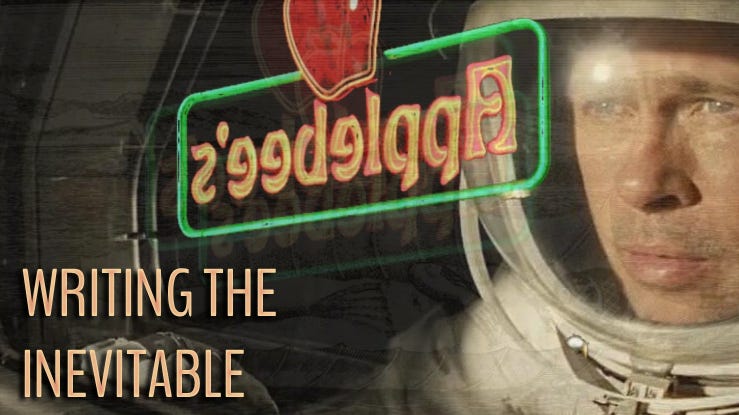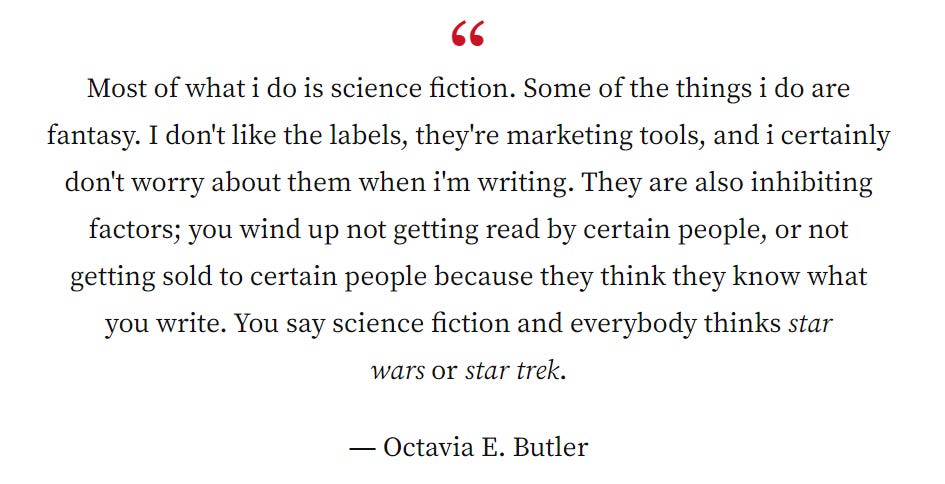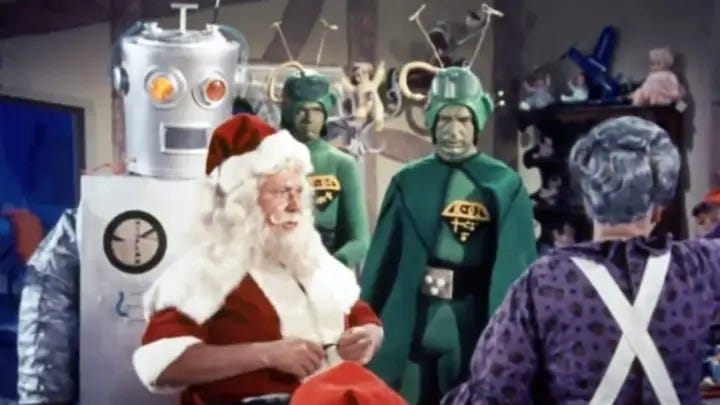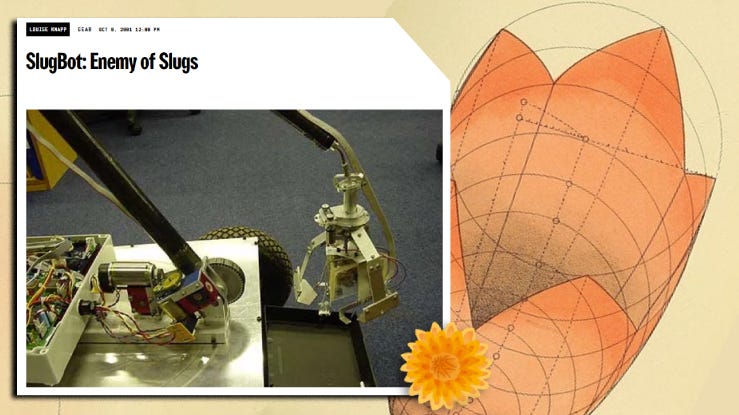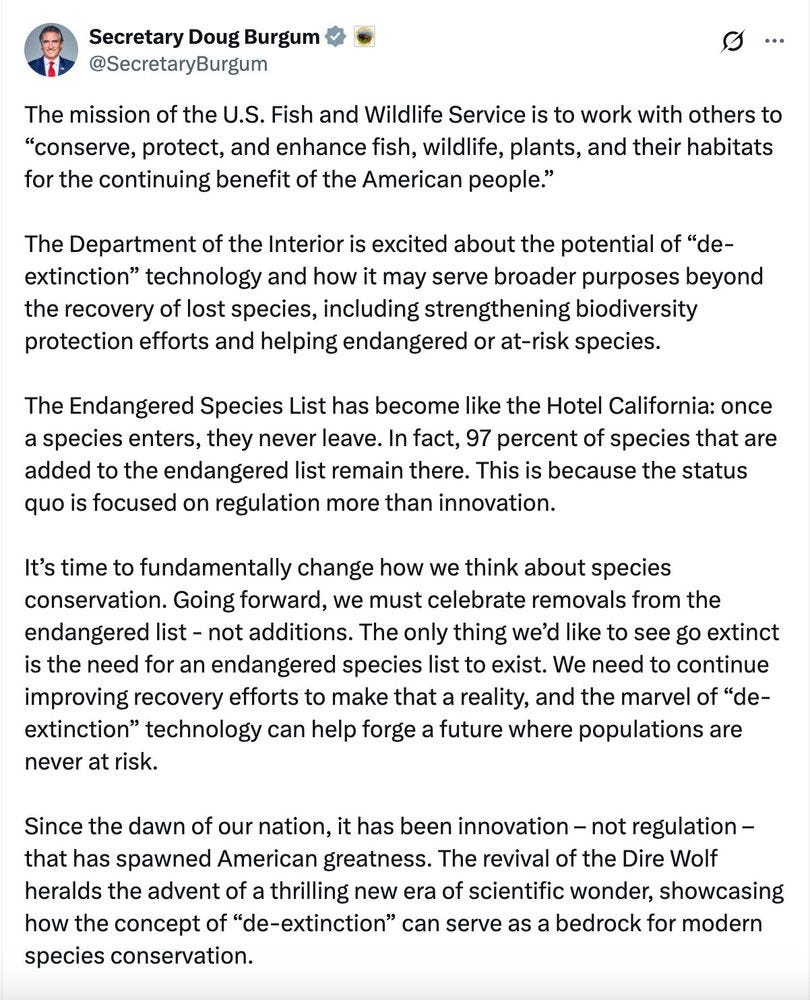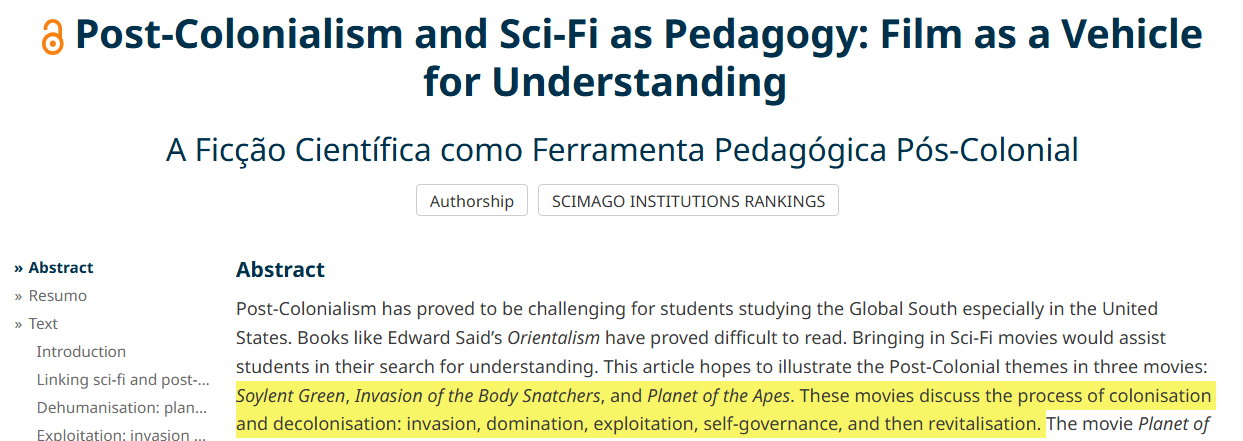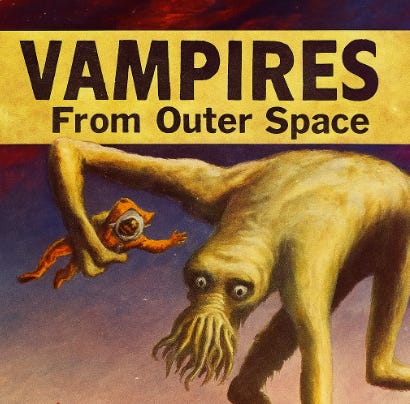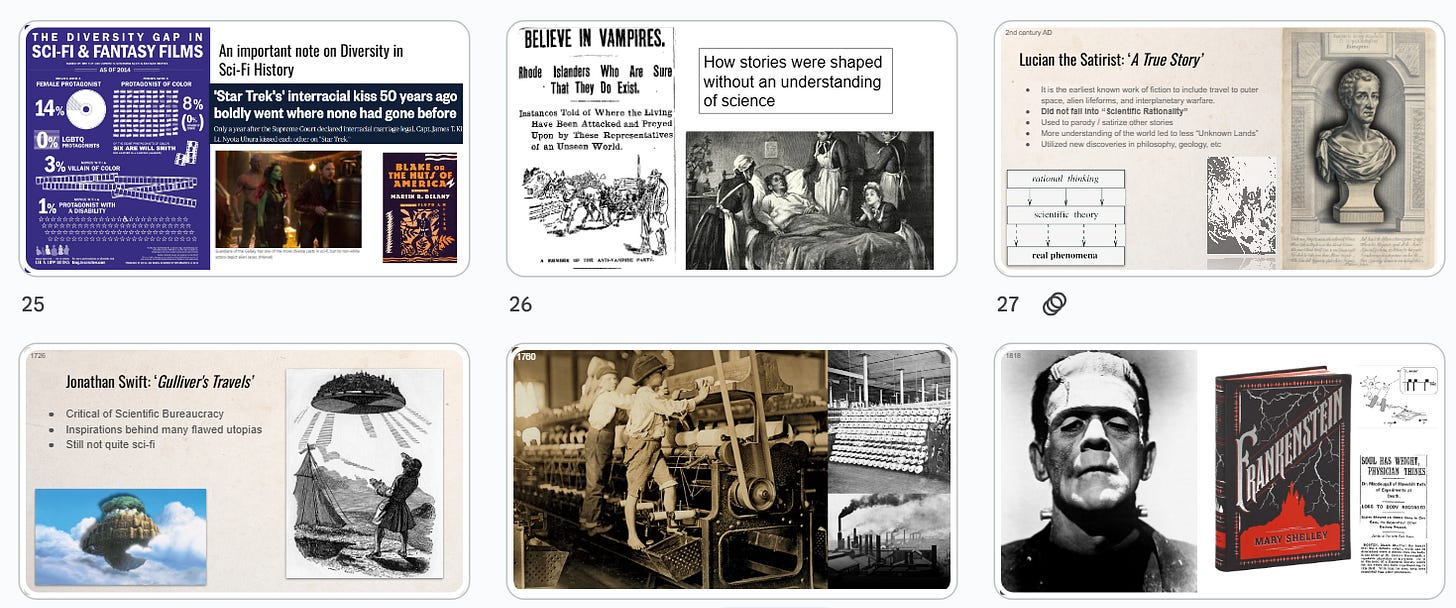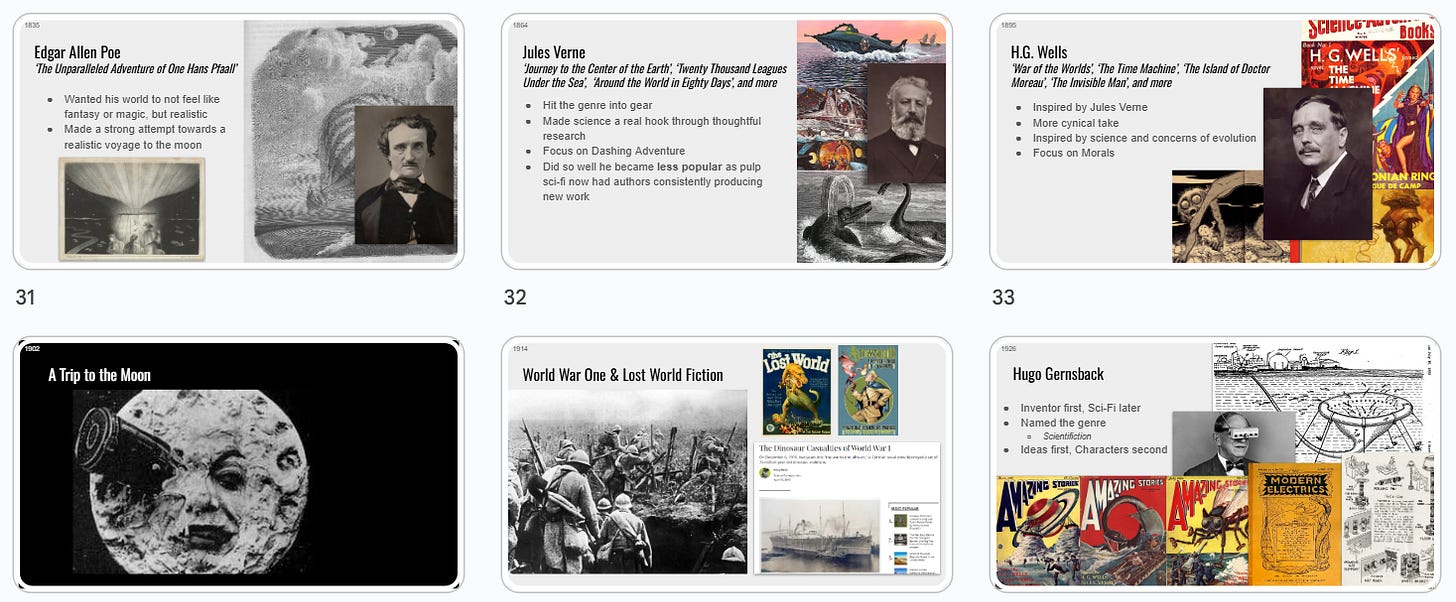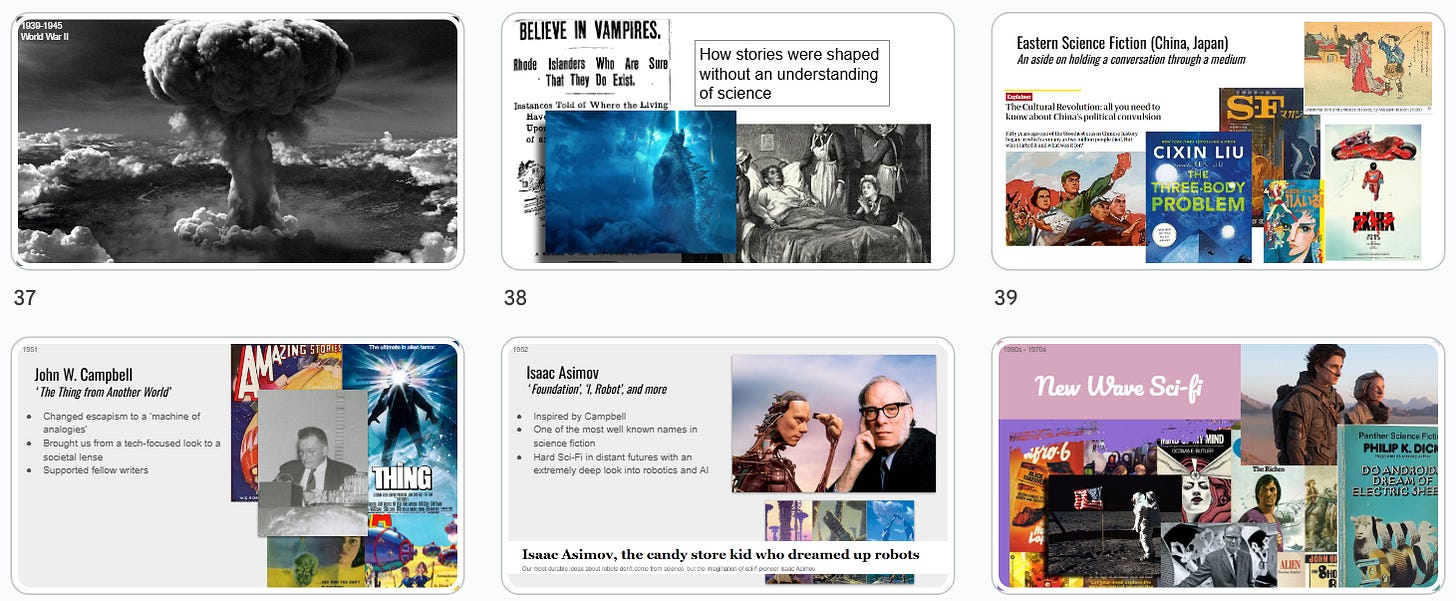The Origins and Purpose of Science Fiction
How the Genre Shapes Our Understanding of Technology, Society, and the Future
Introduction
Science Fiction is a sub-genre of speculative fiction, imagining how developing technology will alter aspects of our future society and selves.
I am a science teacher, and for the past two summers on the side I’ve been teaching an online course on Outschool called Science Fiction Media Literacy. As I develop and run the second installment of the course, I’ve been revisiting the original material; I wanted to give my work a fresh polish with some added academic backing.
As I update and refine the lessons, I’ll be sharing them here for anyone interested. These posts will not follow the exact format of my class. Student-centered slideshows and activities don’t end up translating directly into blog content, so each entry will offer a shorter summary of the main ideas we cover.
Today, we’ll be investigating why science-fiction is useful to the causes of science, technology, and society, including some background into it’s ongoing conversation.
Designing Technology
The specific chain of environmental events that shaped human evolution, from life beginning in the oceans to the formation of the Isthmus of Panama altering global climate and drying parts of Africa, is unlikely to be replicated elsewhere. Aliens will not look like little gray men.
In the same way that our biology is shaped by specific conditions, the way we design and imagine technology is also intricately linked to societal history.
Inventions such as the helicopter, rocket, waldo, cellphone, and taser had inventors who all strongly credited works of science fiction in their design.
Investing in Technology
“Science fiction writers foresee the inevitable, and although problems and catastrophes may be inevitable, solutions are not.”― Isaac Asimov
Matt Hancock, Former Secretary of State for Health and Social Care of the United Kingdom, was in charge of vaccine distribution during COVID-19. He has since credited the film Contagion, containing a highly contagious respiratory virus, as influencing his distribution plans.
“In the film, it shows that the moment of highest stress around the vaccine programme is not before its rolled out – when the scientists and manufacturers work together at pace – it’s afterwards when there is a huge row of the order of priority,” - Matt Hancock
In fact, a 2024 study found that showcasing future technologies in science fiction had potential to lower market uncertainty and accelerate innovation efforts related to those technologies.
Preparing for and Reacting to Technology
When I ask students if we should bring Woolly Mammoths back to life, the typical answer is a firm no - because Jurassic Park. After reflecting on the movie’s plot and the true nature of a hairy elephant, we usually move into deeper discussions around poaching protections and climate change. Still, it’s interesting how much our main cultural reference point can shape public opinion.
With the ‘rise of artificial intelligence’, films pull us back into those same fears and concerns. While more immediate threats are playing out due to AI, John Rhys-Davies still lectured my fiancée at Fan Expo about how everything will collapse in two years, echoing that early-to-mid 2000s fear of machines turning on us. In 1999, The Matrix warned us about lifeforms being used as batteries - and just two years later, SlugBot was created to do exactly that.
As teachers like myself adjust to ChatGPT in the classroom, the curriculum is incorporating science fiction as a valuable learning tool under complex and uncertain technological landscapes.
Unfortunately, when de-extinction technology grabbed public attention with the supposed return of the dire wolf, it took only days for the Trump administration to use the moment to redefine the word “harm” in an attack on the Endangered Species Act. After all, why bother protecting all that land if we can just bring everything back?
Reflections on our past and choosing the future
Science fiction is a “political-economic means [to] influence the transformation processes responding to grand challenges, guide them in certain directions, [and to] promote or even hinder them.” Hausstein and Lösch (2020)
Science Fiction holds up windows and mirrors. We allow ourselves to step into a set of alien shoes to see other worlds, and find commonality between our identity and the unknown. When Star Trek started airing on Thursday evenings at a rather unpopular time-block, it was the only show on television to apply real-world issues of nuclear annihilation, desegregation, and other cultural tensions in a fictional setting.
Origins of Science Fiction
I cannot earnestly write on the entire history of a genre, however I do want to share some interesting takeaways I got from my research.
Proto-Science Fiction such as Lucian the Satirist’s A True Story and Jonathan Swift’s Gulliver’s Travels helped lay a solid foundation to criticize society in a setting surrounding new discoveries, but were not grounded in scientific rationality to fully meet our modern standards.
While occasionally contested, I currently side with Mary Shelley’s Frankenstein being the first true work of science fiction. It utilizes new discoveries on neural pathways and experiments attempting to calculate the weight of a soul, while critiquing societal issues that haven’t quite caught up to the tech.
I had no idea that Edgar Allan Poe was a big science-fiction author.
I love that Jules Verne (Journey to the Center of the Earth, Around the World in Eighty Days, etc) was so cataclysmic to the genre, that he became less popular overtime due to new authors inspired by his work succeeding.
There was a surge of lost world fiction (dinos and such) during World War One, and it was usually very colorful and fun as the field of paleontology grew and people needed an escape from everything.
New Wave Sci-fi emerged when everything from the past felt overused and problematic, and played around with the conventions of the genre.
Finally, the history of the genre, as I know it, is shaped by a very one-sided Western perspective. I’m reminded of my remote students in Spain during COVID-19, who explained how Halloween could be controversial across generations and regions, as it was entering their culture mostly through American television. Similar to this, science fiction was thriving in other parts of the world, yet the conversation tended to flow in only one direction. While, for instance, manga from Japan was often translated into English, most other media remained in its original language - except, of course, for American content. We were the loudest and this limited the genre’s ability to grow through other perspectives.
This message carries the same away across any minority group within America as well. Even today, the most popular films such as Guardians of the Galaxy still largely depict people of color, in other colors of paint.
Anywho, that was the first class with thirteen more to go. Hope you enjoyed.
Disabilities and Optimistic Futures (Part 1)
“Life Can Only Be Understood Backwards, But It Must Be Lived Forwards”


